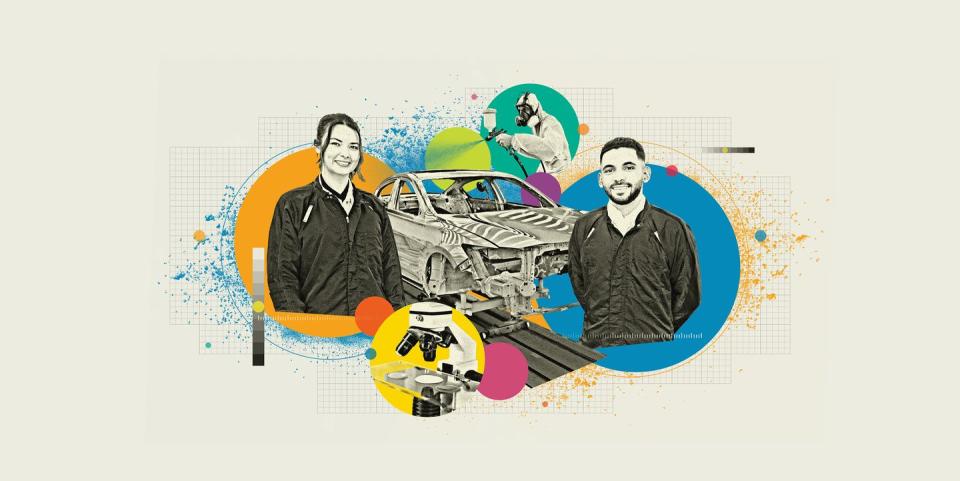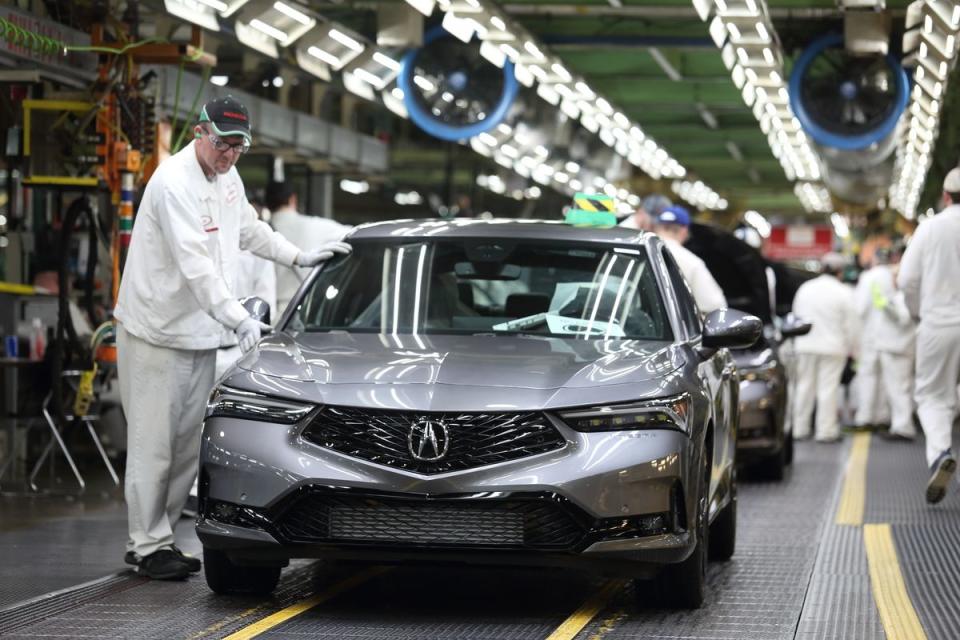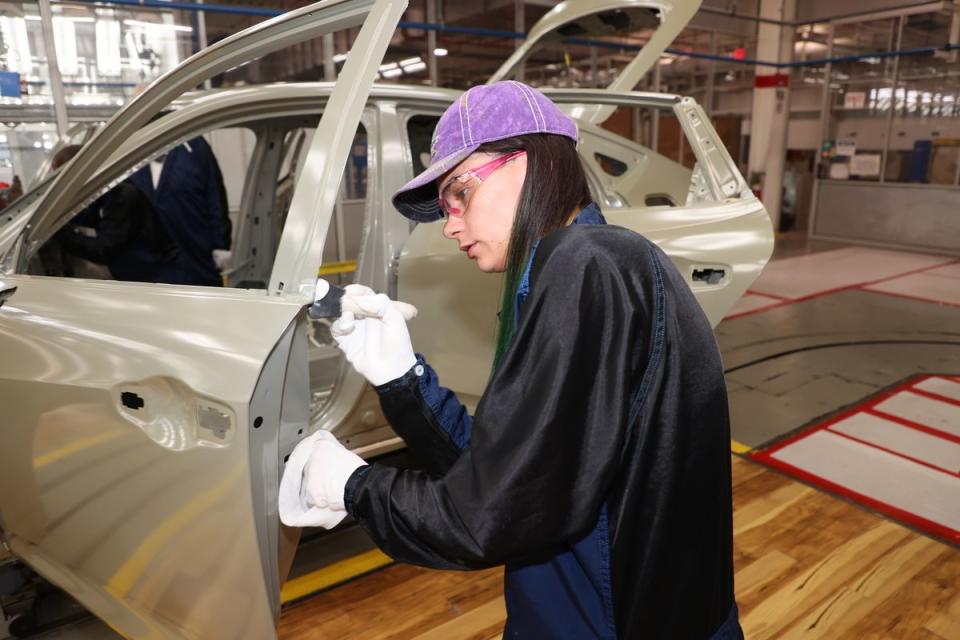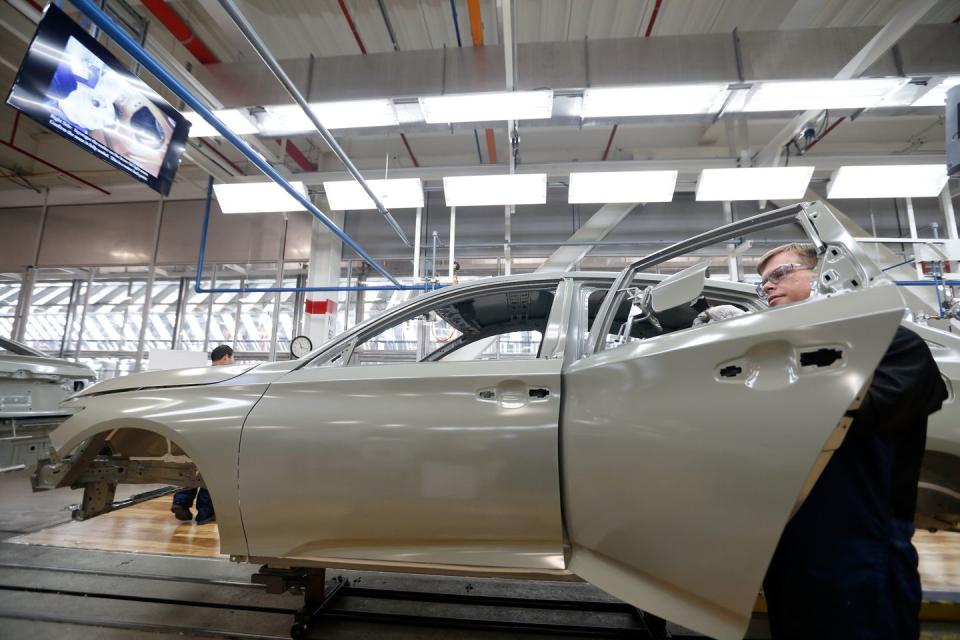How Engineers Develop New Paint Colors

My old truck shows its age. Its rusty undersides, cracked bumpers, and scratched body bear the blemishes of 18 years on this Earth. But look deep into the Eucalyptus Mica paint and it’s still got that hallmark shine, its brilliance unmarred after 200,000 hard miles. That fact is no coincidence, rather the result of decades of improvement in paint science. And nearly 20 years later, people are still working to make it better.
At the forefront are people like Samantha Thobe and Ibrahim Alsalahi. They’re engineers for Honda, working in Marysville, Ohio on the next generation of paint colors. And if they do their jobs right—something that’s tough to doubt after a thoughtful conversation with either of them—Honda and Acura owners 20 years from now will be as impressed as I am today.
Welcome to The Professionals, a Road & Track column where we talk to the fascinating people behind some of the automotive industry’s most fascinating jobs.

“My role is to take a conceptualized color and make it manufacturable within an automotive production setting,” Thobe, color development lead at the Marysville auto plant, told Road & Track. “Our design teams come up with the new colors [...] they travel the world to come up with them and come up with that concept [...] My job is to figure out how we can replicate this dream color that was created in a lab with the material, equipment, and processes made to produce almost 230,000 units annually on our line.”
That’s a task an order of magnitude more complicated than making low-volume paints for high-end cars. A Rolls-Royce benefits from hours in the paint shop, hand finishing, and the promise of an owner who will baby it. An Accord has to roll off the line in a fraction of the time, sit on an uncovered dealer lot without attention for weeks, and survive decades of use by someone in the Rust Belt who treats it like an appliance. The paint has to be designed from day one with this in mind.

Honda learned this the hard way. The legendary reliability of its Nineties and early Aughts cars mean they all stuck around long enough to see the clear coats peel off their roofs and hoods, a fact that marred their image as forever cars. Thobe’s job hinges on making a manufacturable paint that bonds well, is thick enough to survive for years, and keeps its luster.
It’s a natural role for an engineer with an eye for the creative. Thobe, who is 25 and hails from St. Henry, Ohio, graduated from the Ohio State University for Chemical Engineering. Honda, with its large manufacturing footprint just a short drive from OSU’s campus, gave her an opportunity to flex that degree while incorporating a bit of her artistic side, helping to make stunning colors like Tiger Eye Pearl as stunning in reality as it looked in concept images.

“When it comes to chemical engineering, I just really liked the specifics of the process. That you can track down to the molecules and the atoms what’s going on,” Thobe says. Making sure they all stay well-behaved is the key to making paint that adheres well, arranges its crystals correctly, and reflects a depth and quality that customers perceive as expensive.
Easy to manufacture and built to last aren’t always the same, which is where Alsalahi comes in. A 24-year-old paint durability engineer from Palestine, Alsalahi’s role is in a push-and-pull relationship with Thobe’s. His job is to make sure that the paints Thobe and her team are designing hold up to the salt, sun, and scrapes of the real world.

 Yahoo Autos
Yahoo Autos 